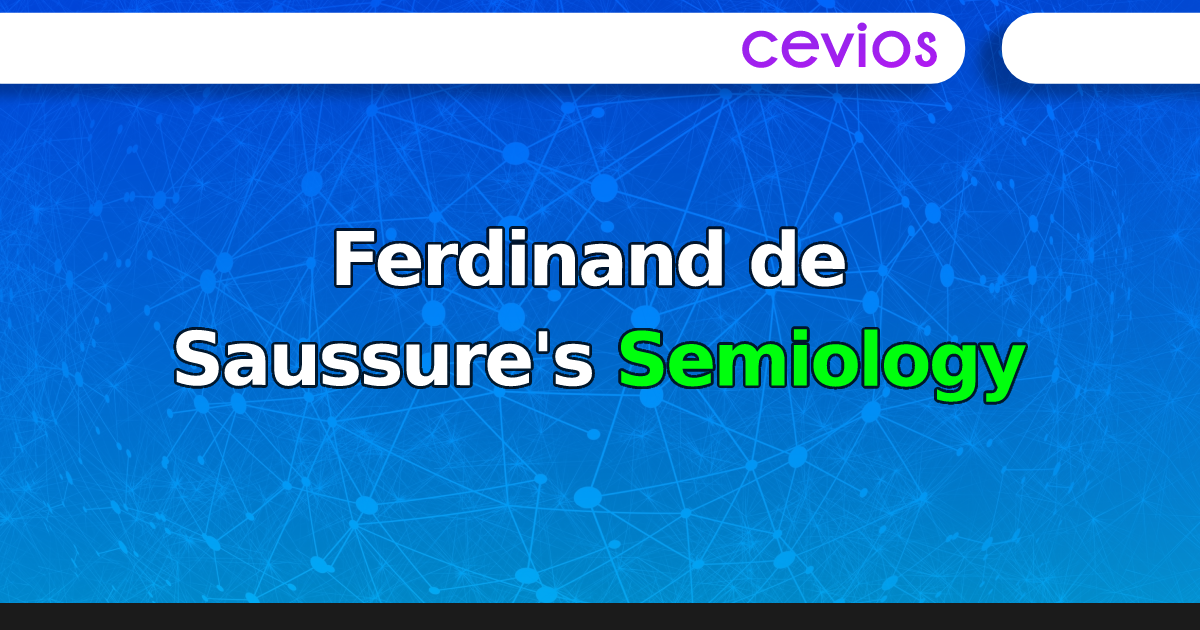Ferdinand de Saussure’s Semiology
According to Ferdinand de Saussure, semiology is a “science that studies the life of signs within social life” (Saussure, Bally, and De Mauro, Cours de linguistique générale, p.33), Its goal is to teach us “what constitutes signs, what laws govern them” (ibid.).
From what is underlined in the quote above, we can deduce that the type of semiotics that Ferdinand de Saussure hopes exist is scientific. It is only interested in what is social.
Sign Systems
By reading the passage that precedes the definition of semiology[1], we can learn one of its fundamental principles: Signs are part of a system. In other words, a sign can never be isolated; it is always in relationship with other signs: All languages, therefore, are sign systems.

Among sign systems, he appoints language, writing, deaf-mutes’ alphabet, symbolic rites, polite formulas, and military signals[2].
Language is the most important of them all
Language is the most important because it is omnipresent and consequently, unavoidable. One of its strong points compared to other sign systems is its ability to talk about itself, and clarify itself through its elements: Is it possible to explain an ambiguous image with another one?
Language can achieve it by way of definitions, reformulations, explanations…etc., Louis Hjelmslev calls it « metalanguage »[3].
On top of this, language can describe and explain other sign systems.
Linguistics: A branch of semiology
According to Ferdinand de Saussure « Linguistics is only a part of this general science[4]» (Saussure, Bally, and De Mauro, Cours de linguistique générale, p.33)
This Parent-Child relationship allows linguistics to inherit the characteristics of semiology.
F. de Saussure specifies that « The laws that will be discovered by semiology will apply to linguistics » (ibid.)

As Saussure is a linguist, he focused on the explanation of linguistics and left semiology which « constitutes a part of social psychology, and therefore general psychology » (ibid.) to psychologists.
Think About It:
By considering linguistics a branch of semiology, we can deduce some important ideas:
– That linguistics is a semiology, and that this latter is not necessarily linguistic.
– Some founding distinctions of linguistics could be generalized with precaution.
[1] “Language is a system of signs that express ideas, and is therefore comparable to writing, the alphabet of deaf-mutes, symbolic rites, polite formulas, military signals, etc., etc. It is only the most important of these systems” (Saussure, Bally, and De Mauro, Cours de linguistique générale, p.33)
[2] He followed his examples with the words “etc., etc.” to say that he is giving examples and that his list is incomplete.
[3] Cf. (Siouffi and Van Raemdonck, 100 fiches pour comprendre la linguistique, p.197).
[4] General science → Semiology.
“Ferdinand de Saussure’s Semiology” is part of:
Khettab, Sid Ahmed. Semiotics and Semiology: From Sign to Semiosis and From Code to Discourse [Course]. 2021. DOI.org (Datacite), https://doi.org/10.13140/RG.2.2.23509.55520. [Online Article]
KHETTAB, Sid Ahmed. Semiotics and Semiology: From Sign to Semiosis and From Code to Discourse. Independently published, 2021, https://www.amazon.com/Semiotics-Semiology-Sign-Semiosis-Discourse/dp/B0959N6111. [Paperback]

